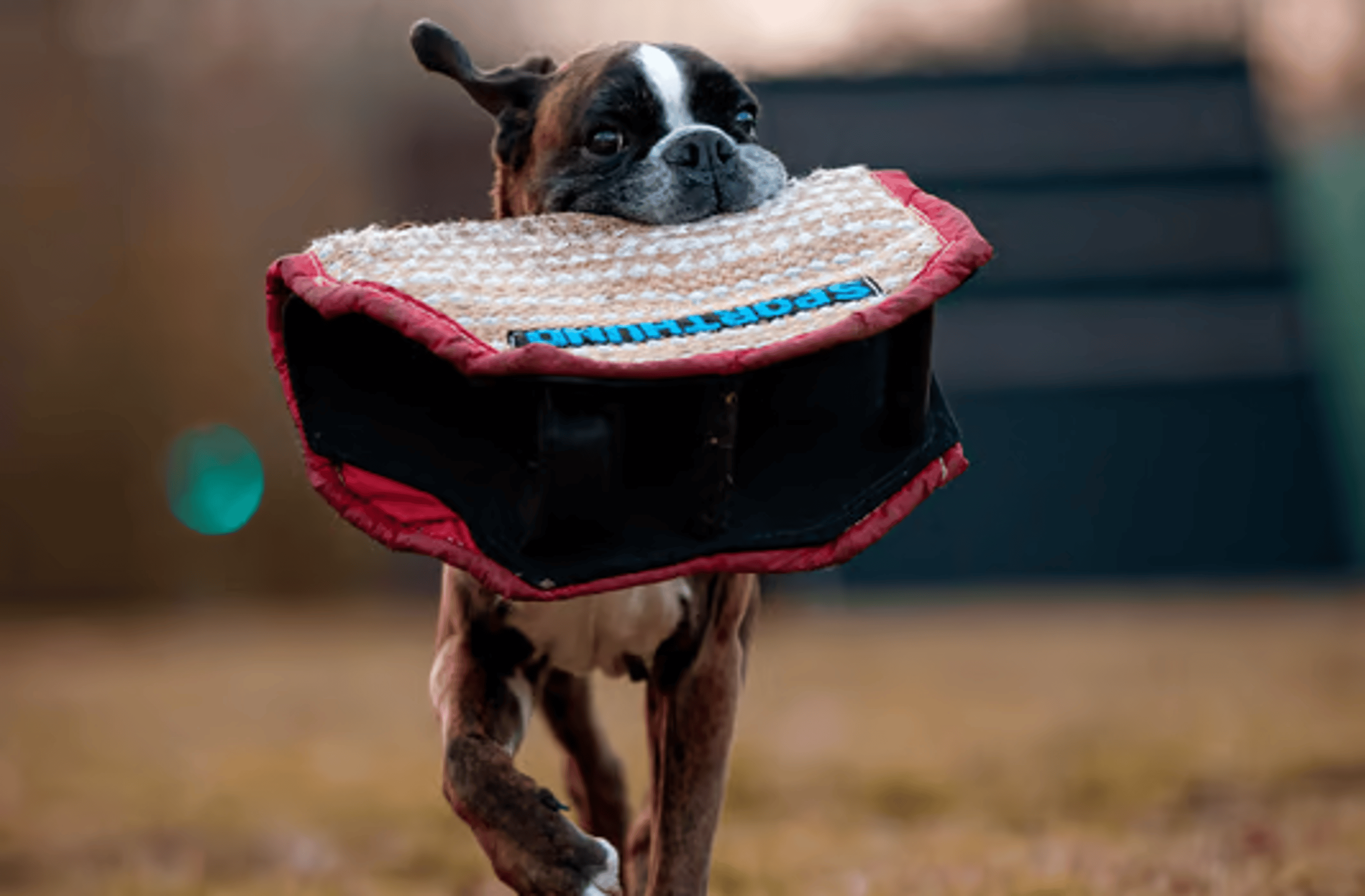
Working dogs
Table of contents
Many dog owners will have heard the term "working dog" before. These are dogs that are used for a specific job or a specific task. People often think directly of the classic hunting dog. However, there are also major differences. For example, there are so-called working dogs. You can find out how they differ from their colleagues in this blog post.
What is actually a "working dog?"
A working dog is a dog that has been bred for a specific job or activity. Working dogs are therefore the busy bees among dogs. The difference between them and other breeds that are also active and eager to work, such as hunting dogs or terriers, is that they have been bred to work together with humans.
They want to work in a team and are less likely to find their own solutions. Their particularly pronounced ability to learn things quickly and their desire to always be active in mind and body make them the perfect companions for anyone who wants to work with their own dog. I will explain what such work can look like a little further down in the text.
Of course, there are also many different types of working dogs. The German Shepherd is probably the most popular of these. Rottweilers, Dobermans, Malinois and Bouvier des Flandres are also among them. And, of course, the German Boxer.
A life with a working dog:
In any case, it is yet another kind of responsibility within the society we live in than with a dog bred purely for the company of humans. Working dogs have more energy, they want to work, to push themselves physically and mentally. Some of them can become a problem in the wrong hands. Underchallenge makes them go crazy, they are uncontrollable.

I want to emphasize that the sport of working dogs poses no danger to humans and/or dogs.
The three sub-disciplines of tracking, obedience (admittedly a very outdated word for teamwork in the dog arena) and protection serve at different levels to challenge the dog optimally in all its abilities. Only powerful, healthy and mentally resilient dogs with self-confidence and at least a good instinctual disposition are suitable for this team sport.
It is certainly also important that the dog has a certain resistance to stimuli. This can be worked on in a targeted manner, because the so-called "switching" from free and independent work in the actions in the protection service, back to obedience, always requires strong nerves.
For me, the joy of working together is the best thing. Working dogs are always ready to do something with you. The "will to please" is certainly pronounced to varying degrees, but the desire to please you when working is present in all of them.
In protection work, the dog is allowed to bite a prey (e.g. a bite pad or a so-called "sleeve"). Of course, this is done according to a precise procedure, which includes a high level of obedience that is painstakingly worked out together. I have never seen dogs as proud as they are with a "conquered" protective sleeve.

What is everyday life like with a working dog?
Experiences from the life of Sarah with Elsa
Of course, I can only speak about my breed, the German Boxer (other working dog breeds are of course regularly encountered in sport). My current Boxers are very different, but one thing always unites them. The active, joyful and strong urge to work with me.
Elsa, for example, takes less pleasure in simply romping around in the woods. She could, of course, and she does when I have sent her away several times. Before that, however, she constantly "asks" for tasks, e.g. she offers to walk, even though I haven't given her a command.
In general, I can say that boxers simply like to be kept busy. It doesn't have to be working dog sport (although that's a good option, of course), it can also be obedience or working in a rescue dog team, for example.
If working dogs are not kept busy - and it is by no means enough just to take them for a walk - they are difficult to handle in everyday life. They are not the dogs that stroll alongside you on a walk in the park and then lie quietly under the table in a café.
But a working dog can also do all this if it has been sufficiently challenged on other days.
Because they enjoy working together, working dogs are always very attached and affectionate. They want to share their lives with you and not be left to their own devices. Joint activities are the greatest happiness for them, as well as cuddles on the couch after a busy day.
For me, working dogs are by far the greatest dogs, this "we-feeling", being a team together, training together and feeling well protected in the evening when you go out on your own is just really great.
If you want to have a dog partner at your side with whom you can simply do anything - but who is not afraid of the work involved and is well informed - you will get a dream dog and will certainly never regret your choice!
Comment area
Write a comment
Weitere Beiträge













